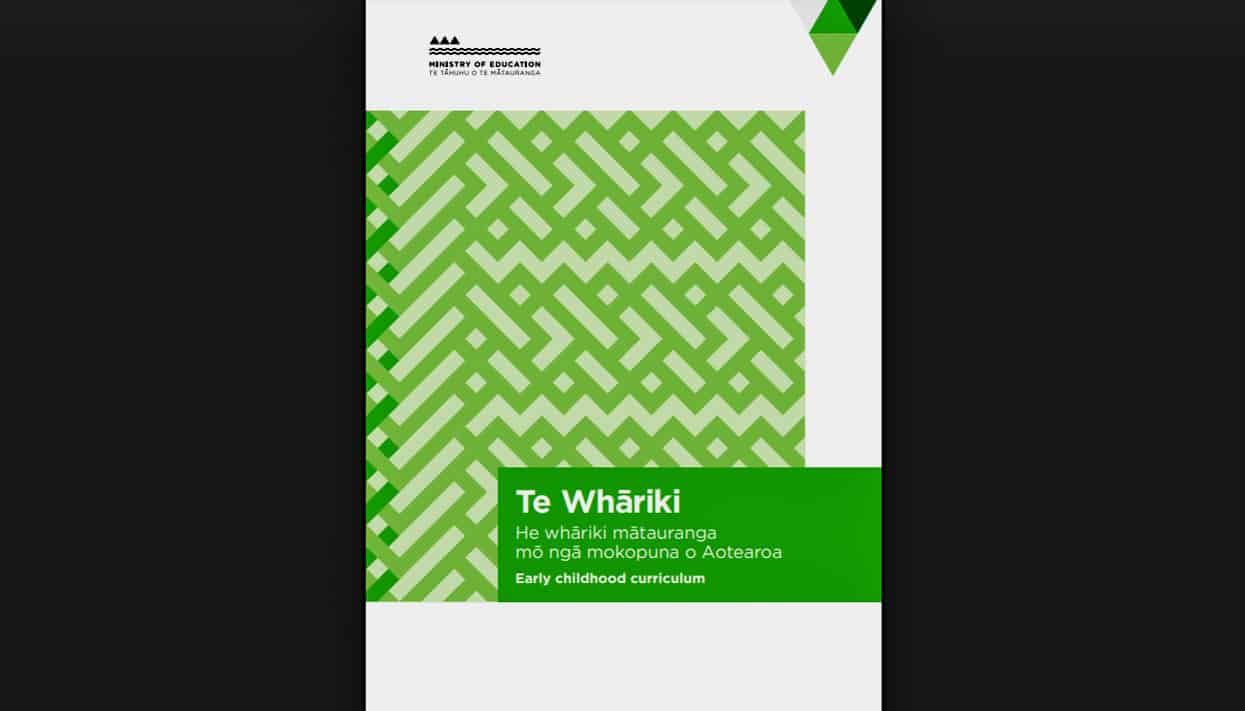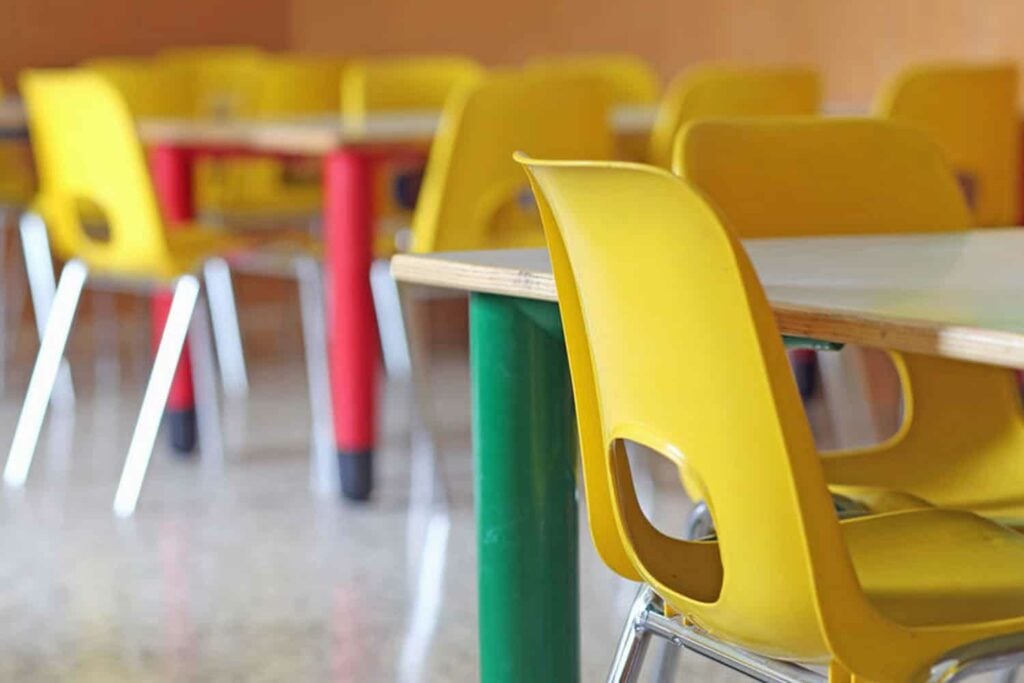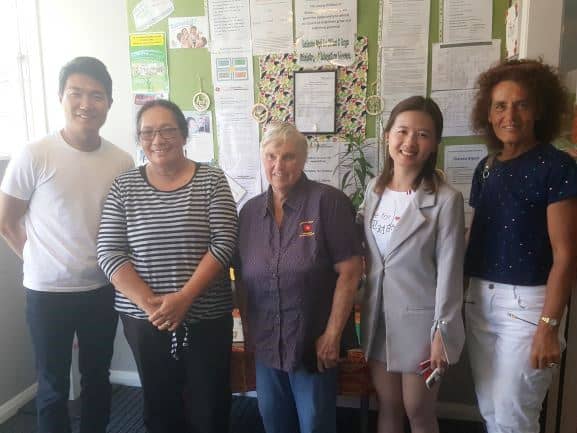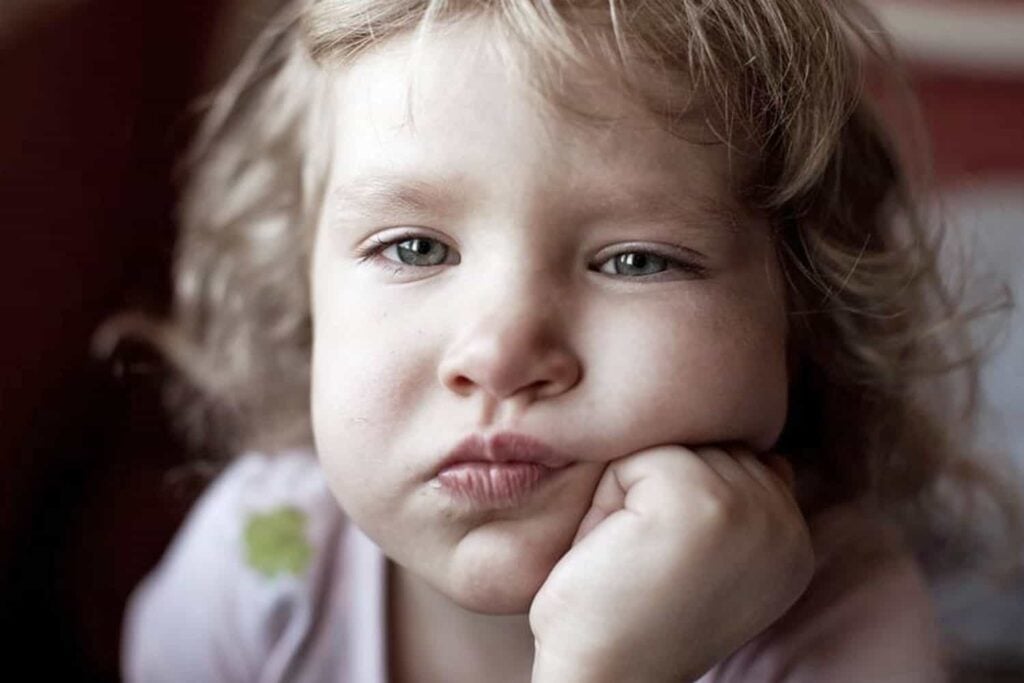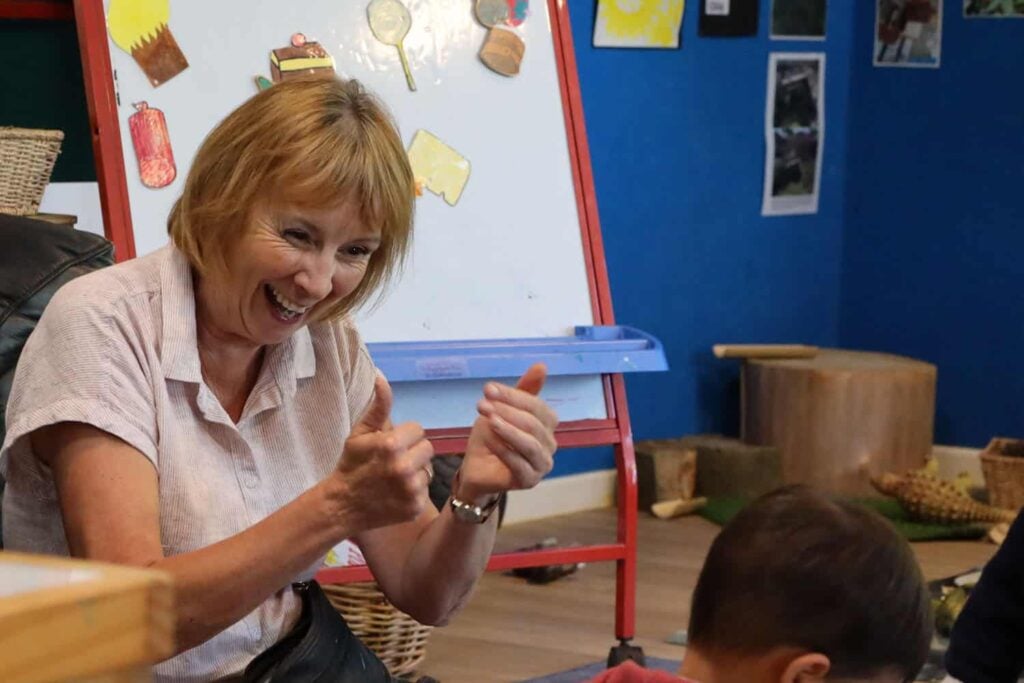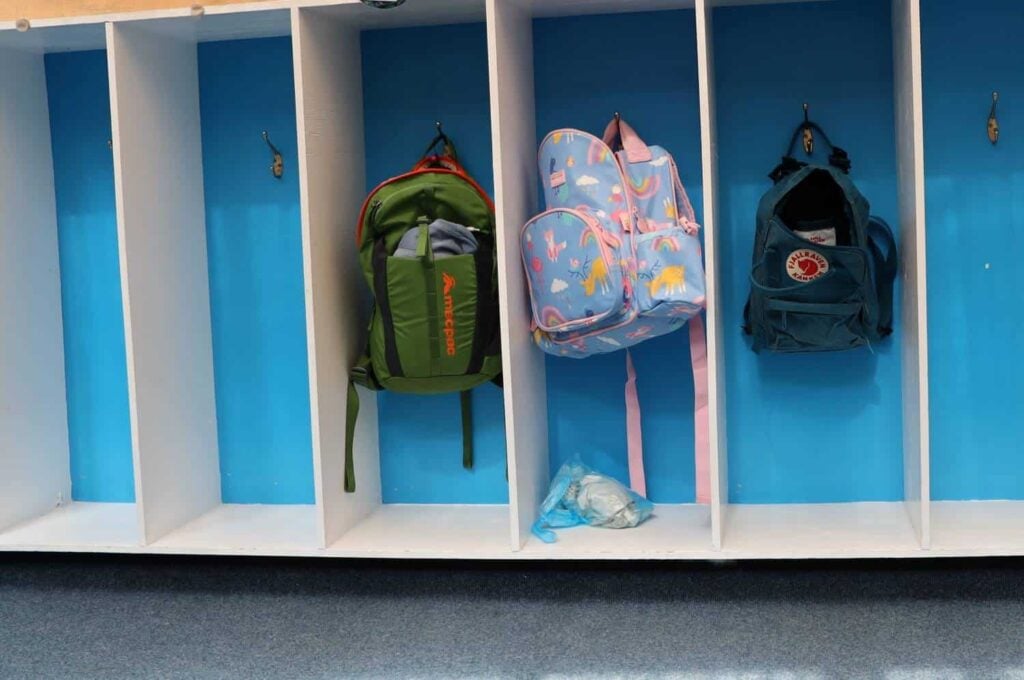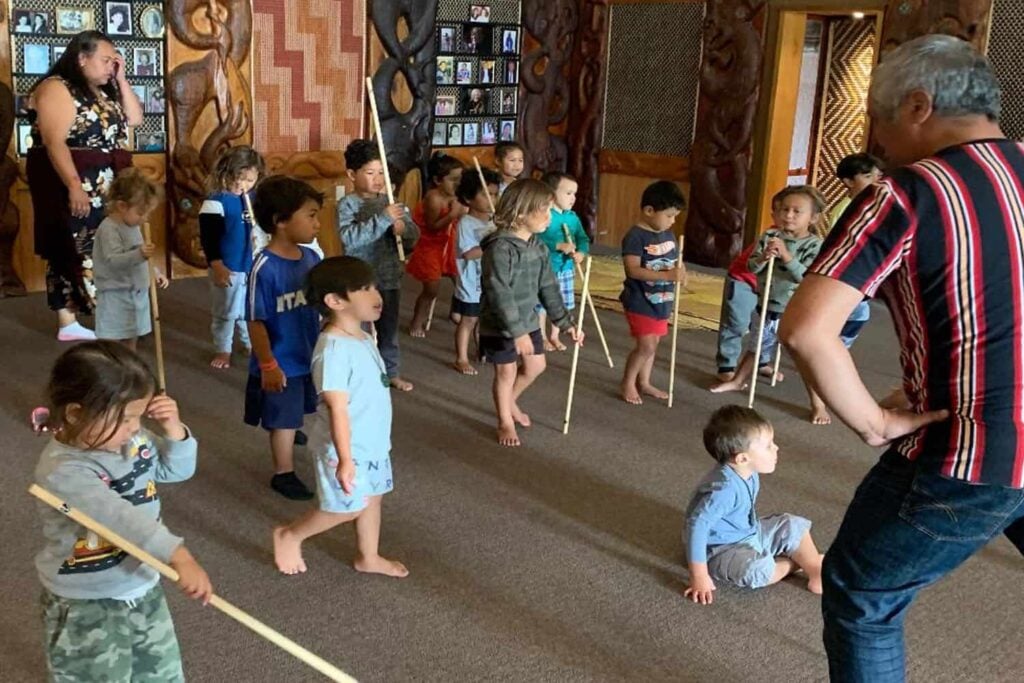Many people, parents and primary school teachers included, may be unaware that in early childhood services we provide an educational curriculum – called Te Whāriki.
On discovering that we have a curriculum, questions may arise such as: Why do we need a curriculum for children so young? Or Aren’t they just playing at that age anyway?
What is Te Whāriki?
Te Whāriki is the national early childhood curriculum of Aotearoa/New Zealand. It is a bi-cultural curriculum which is founded on four key principles which are informed by a range of sources. You can learn more about the early childhood curriculum principles and goals.
The Te Whāriki booklet is a flipbook which contains one document in English and Te Whāriki a te Kōhanga Reo which is a curriculum for mokopuna in kōhanga reo and is written in te reo māori. Te Whāriki a te Kōhanga Reo incorporates four dimensions of human development: tinana, hinengaro, wairua and whatumanawa which are reflected in many māori models of health and wellbeing such as Mason Durie’s Te Whare Tapa Whā and Rangimarie Rose Pere’s Te Wheke. It is important to note that this curriculum is not a translation of the English version and is a curriculum in its own right.
The background of the term Whāriki, is that of a woven mat, which is a taonga (treasure) for both māori and pasifika people and is a metaphor for the developing child and how the principles interweave and depend on each other, influences from community, collaboration between the many participants in a child’s learning; it is this interweaving of participants and perspectives that lead to the achievement of the vision Te Whāriki:
Children are competent and confidence learners and communicators, healthy in mind, body and spirit, secure in their sense of belonging and in the knowledge that they make a valued contribution to society (Ministry of Education, 2017)
Te Whāriki recognises the diverse nature of Aotearoa/ New Zealand and promotes a curriculum which values children’s language, identity and culture and encourages kaiako to develop their practice to ensure that their teaching reflects, acknowledges and incorporates these cultures.
While it may seem that children are “just playing”, Te Whāriki seeks to ensure that kaiako (defined in the document as both qualified teachers and other educators/ adults) encourage and enable children to learn how to learn. Developing the foundation skills for learning is therefore important, the dispositions to take an interest; be involved; persist with difficulty, challenge and uncertainty; express a point of view or feeling; and take responsibility. Te Whāriki is the curriculum that kaiako use to ensure that children are prepared for school and ongoing learning throughout their lives.
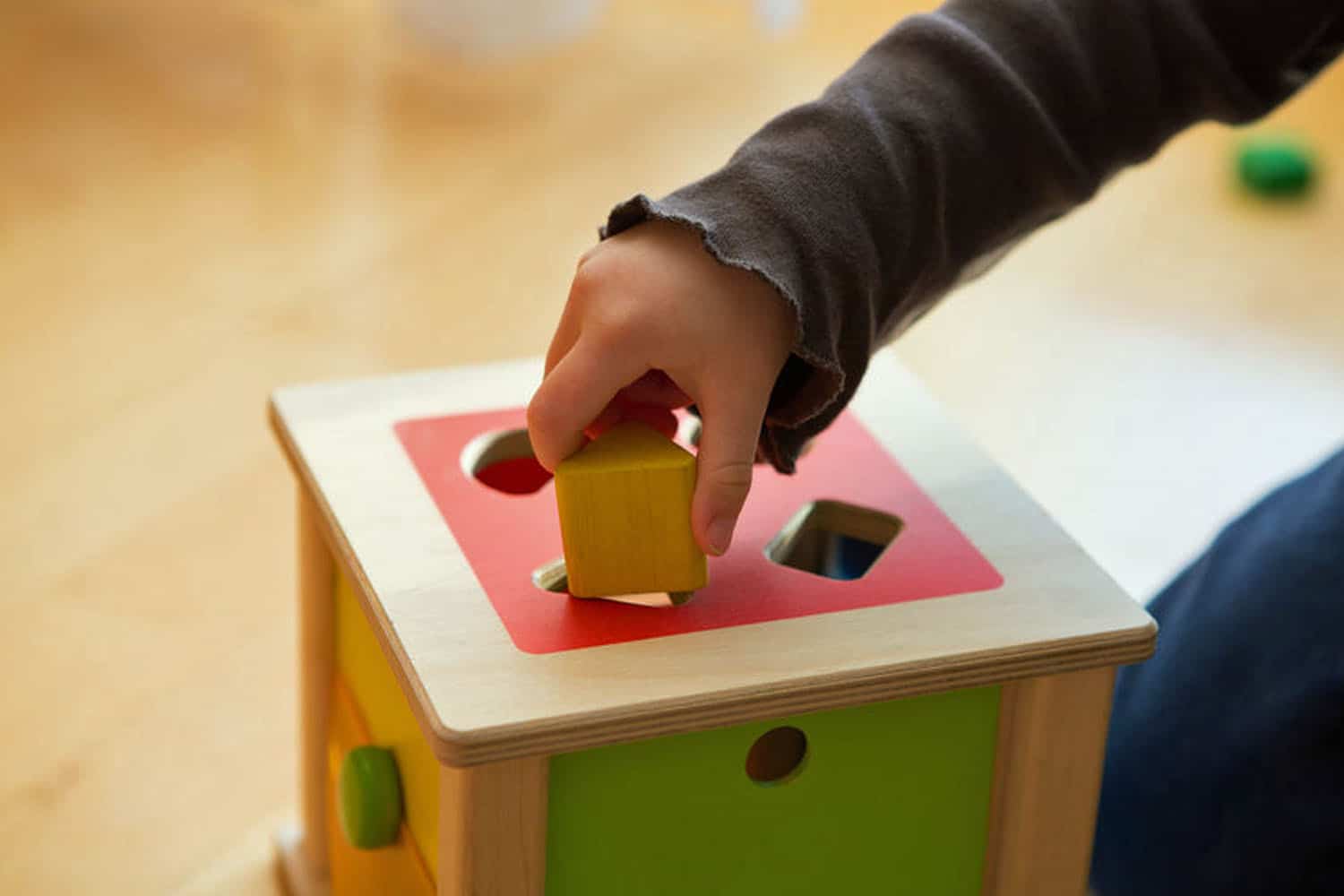 Why do we have Te Whāriki?
Why do we have Te Whāriki?
Te Whāriki is a valuable tool for kaiako to ensure that we are focusing on helping children to learn and develop. Te Whāriki sets out expectations, required capabilities, and goals for supporting children’s learning and development and learning outcomes to support teachers in their planning and evaluation to promote children’s learning.
The learning outcomes and the dispositional basis of Te Whāriki encourage teachers to ensure that they are focused on ensuring that children develop lifelong skills that promote future learning, which is relevant and based on each child’s individual progress and interests. Rather than taking a structured ‘one-size-fits-all’ approach to learning, teachers are encouraged to view the child as an individual and to consider influences on each child’s life and learning; this approach ensures that learning promotes further learning.
With a wide range of Early Childhood Education services available to whānau, it is important to ensure that there is consistency in the way that children are taught. This is important to ensure that as children transition in and out of services, teachers have a unifying role across these services to ensure that all children receive the same level of early childhood education.
Te Whāriki also seeks to ensure that services implement a local curriculum which represents the geographical area, cultures, and individual identity of each service; ensuring that the service represents the local community of a child and their whānau makes learning relevant and motivating for children and their families.
How do I know if the curriculum is implemented well?
To ensure that your child is receiving an appropriate early education and not just being ‘babysat’ check to see that Te Whāriki is being well implemented in your service.
1. The service’s latest ERO report
Every service is required to comply with the latest Early Childhood Licensing Criteria which specify the required level of implementation of the early childhood curriculum, Te Whāriki. Curriculum criterion 1 specifies that “The service curriculum is consistent with any prescribed curriculum framework that applies to the service,” and this is something you should see reflected in the Education Review Office report. Ask your service for a copy of its ERO report or it may be on your service’s website.
2. The service’s policies
Every early childhood service will have its own policies which should be unique to it. It should have a policy or policies around curriculum, or assessment planning and evaluation. This policy should refer to, and be underpinned by, Te Whāriki as a means to inform practice.
3. Learning and teaching is individualised for children
The Responsibilities of kaiako (qualified and unqualified teachers) section of Te Whāriki emphasises the importance for kaiako to ‘Facilitate children’s learning and development through thoughtful and intentional pedagogy’. Check the documentation on your child’s learning at the service and see that kaiako have a good understanding of your child, and have gained a good understanding through talking with and engaging in observations about your child’s individual background, interests and developing skills. The documentation should also show that they are helping your child to continue to develop and extend on these areas.
4. There are opportunities for parents to contribute to their child’s learning
The four principles of Te Whāriki also reflect the importance of multiple perspectives when it comes to your child’s education. Principle 3 (Family and Community) states that children “learn and develop best when their culture, knowledge and community are affirmed and the people in their lives help them to make connections across settings.” This whānau contribution should be reflected in many ways, such as informal conversations; whānau events; contributions to policy review and internal evaluation; encouraged parent involvement; and cultural awareness.
5. The service includes its own local valued learning
Each service should be relevant to the people, places and things in your local area. Your ECE service should reflect the priorities and values of your local iwi, hapū, and community. It should also reflect the history of the area, with an understanding of local legends and influences on that area. This local curriculum is what makes your service unique based on the many different cultures, individual needs, philosophies and relationships in your area.
6. There is a strong relationship between schools/kura and the ECE service
Te Whāriki has a strong focus on learning dispositions and these correspond with the key competencies in the primary school curriculum, beginning to build on dispositions such as taking and interest and being involved prepare children for their future learning. Your ECE service should show that they are focusing on dispositional learning through their documentation and their practice. Strong links with schools are also a great way to assist children in transitioning with schools.
I am a primary school teacher, what do I need to know?
In some communities, schools and new entrant teachers will not have a lot of familiarity with local ECE services. There are a wide range of ECE services available to children and it is impossible for a new entrant teacher to be familiar with all of them but there are some ways that primary school teachers can prepare for new entrants to their classroom.
1. Become familiar with Te Whāriki
Some new entrant teachers may be surprised to know that there is a strong correlation between Te Whāriki and The New Zealand Curriculum. There is a section in Te Whāriki titled Pathways to school and kura which compares the two curricula and illustrates how the strands of Te Whāriki correspond with the key competences of the New Zealand Curriculum; becoming familiar with Te Whāriki, particularly this section, is a useful way to gain an understanding of our curriculum and approach to teaching and learning and how this supports learning continuity into the school years.
2. Access to online or paper portfolios
Gaining an understanding of prior learning and dispositions can be very helpful for a new entrant teacher as it will give them some insight into a child’s needs and motivation. An easy way to gain a basic understanding is to ask for the child’s profile book which will contain documentation of their learning journey through the ECE service. Some services will also offer an online portfolio system and may be able to create a logon for new entrant teachers to view selected children who will soon be transitioning to their school.
3. Visits to the ECE service and developing relationships with an ECE service
Developing strong relationships with ECE services can be a very valuable way to prepare for new students arriving at a school. While many ECE services will not have the capacity to arrange school visits due to operating on minimum ratios (and primary school teachers just don’t have enough hours in the day!), they will appreciate a visit from a new entrant teacher or even email communication to share information about children who will soon be going to school. Many services will also have websites and Facebook pages that you can view to gain some insight into children’s learning.
CONCLUSION
In New Zealand we are blessed to have such a comprehensive Early Childhood Curriculum which is inclusive and encourages our children to develop the confidence and competence to engage in lifelong learning throughout their lives. It is an important tool for everyone who is involved in a child’s education from early childhood teachers, to whānau and to future educators to ensure that children receive the highest quality education that they can have.
You may also be interested in reading:
What do children need to learn before starting school?
News article: Bungle over the new curriculum – problems with the consultation process and re-writing Te Whariki


